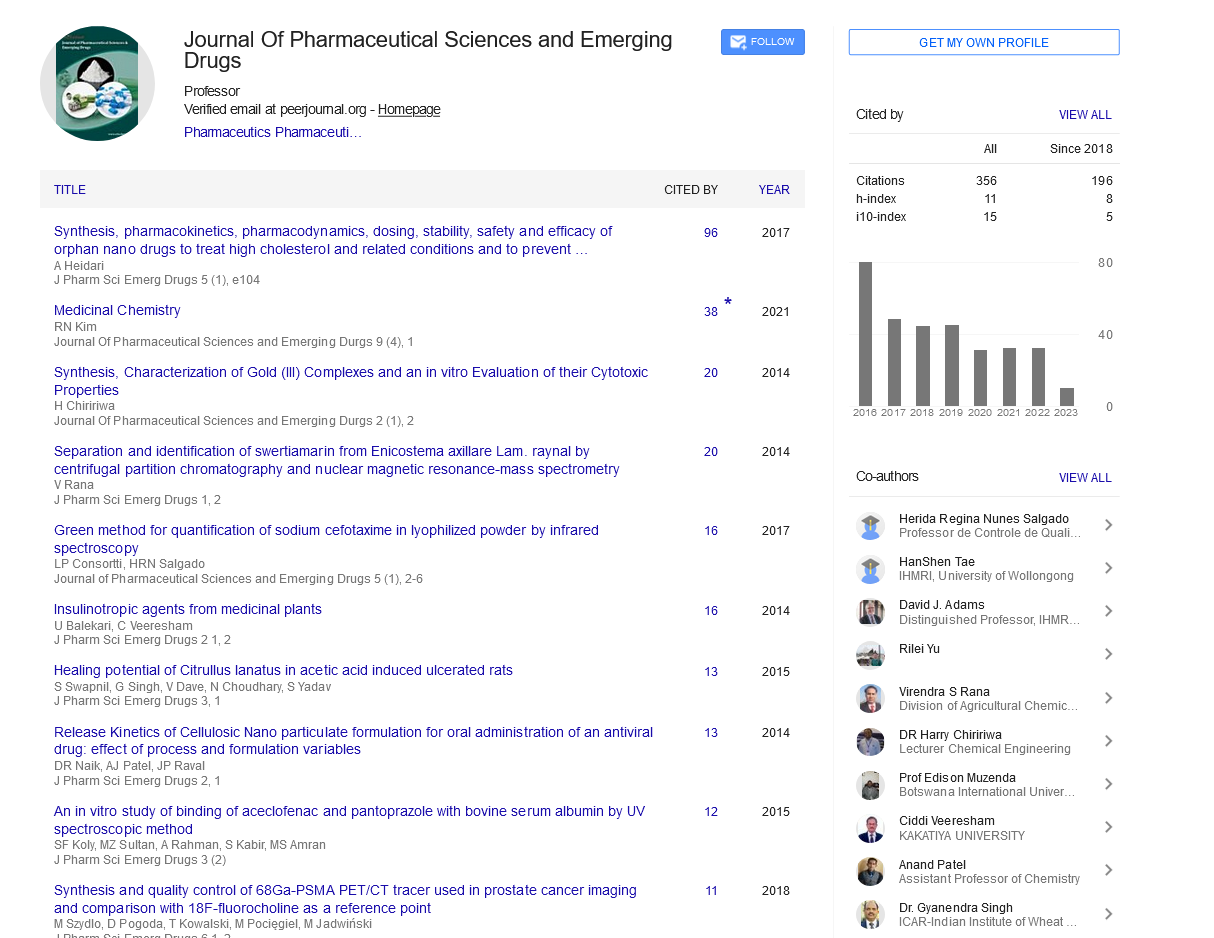Commentary, J Pharm Sci Emerg Drugs Vol: 12 Issue: 3
Biodegradable Drug Delivery Systems: Revolutionizing Therapeutics
Luo Wang*
1Department of Pharmacology, Hospital of Zhengzhou University, Zhengzhou, China
*Corresponding Author: Luo Wang,
Department of Pharmacology, Hospital of
Zhengzhou University, Zhengzhou, China
E-mail: luow@gmail.com
Received date: 22 May, 2024, Manuscript No. JPSED-24-148985;
Editor assigned date: 24 May, 2024, PreQC No. JPSED-24-148985 (PQ);
Reviewed date: 07 June, 2024, QC No. JPSED-24-148985;
Revised date: 14 June, 2024, Manuscript No. JPSED-24-148985 (R);
Published date: 21 June, 2024, DOI: 10.4172/2380-9477.1000185
Citation: Wang L (2024) Biodegradable Drug Delivery Systems: Revolutionizing Therapeutics. J Pharm Sci Emerg Drugs 12:3.
Description
In the quest for effective and targeted therapies, drug delivery systems have evolved significantly over the past few decades. Among the various innovations, biodegradable drug delivery systems have emerged as a transformative approach in pharmacotherapy. These systems not only enhance the efficacy of drugs but also address important environmental and safety concerns associated with traditional drug delivery methods. Biodegradable drug delivery systems are designed to release therapeutic agents in a controlled manner while being composed of materials that can safely degrade in the body. The primary objective of these systems is to improve drug bioavailability and therapeutic efficacy while minimizing side effects. Biodegradable polymers, such as Polylactic Acid (PLA) and Polycaprolactone (PCL), are commonly used to create these delivery systems.
These materials can break down into non-toxic by products that the body can easily absorb or excrete, making them ideal for pharmaceutical applications. The functionality of biodegradable drug delivery systems lies in their ability to control the release of drugs over time. Moreover, these systems can be engineered to respond to specific physiological conditions. Such responsiveness allows for targeted drug delivery to specific sites, minimizing systemic exposure and potential side effects. For example, a biodegradable polymer can be designed to release its therapeutic payload in an acidic tumor microenvironment, thereby maximizing the treatment's efficacy against cancer cells while sparing healthy tissues.
One of the most significant advantages of biodegradable drug delivery systems is their potential to enhance drug stability and bioavailability. Many therapeutic agents, particularly peptides and proteins, are susceptible to degradation in the bloodstream, leading to reduced efficacy. By encapsulating these drugs in biodegradable matrices, their stability can be improved, allowing for better therapeutic outcomes. Additionally, the safety profile of biodegradable systems is a major consideration. Traditional drug delivery methods often involve non-degradable materials that can accumulate in the body, leading to toxicity and adverse effects. In contrast, biodegradable systems break down into harmless by products, significantly reducing the risk of long-term complications. This biocompatibility makes them suitable for various applications, including local drug delivery for chronic conditions and implantable devices.
Despite their advantages, biodegradable drug delivery systems face challenges that need to be addressed. The selection of appropriate materials is important, as the degradation rate and by products must align with the therapeutic goals. Moreover, the manufacturing processes can be complex, requiring precise control over the drug loading and release profiles. Innovations such as 3D printing are being explored to create personalized drug delivery devices tailored to individual patient needs. Additionally, the integration of nanotechnology can improve the targeting and efficacy of biodegradable systems, leading to enhanced treatment outcomes.
Conclusion
Biodegradable drug delivery systems represent a significant advancement in the field of pharmaceuticals, offering a promising solution to many challenges associated with traditional drug delivery methods. They can be designed to release the drug in a sustained or targeted manner, depending on the therapeutic requirements. For instance, in sustained-release systems, the drug is gradually released from the polymer matrix, maintaining therapeutic levels over an extended period. By improving drug stability, bioavailability and safety, these systems have the potential to revolutionize therapeutic approaches across a wide range of medical conditions. As study continues to evolve, the future of biodegradable drug delivery systems looks promising, paving the way for more effective and environmentally friendly treatment options in healthcare.
 Spanish
Spanish  Chinese
Chinese  Russian
Russian  German
German  French
French  Japanese
Japanese  Portuguese
Portuguese  Hindi
Hindi 